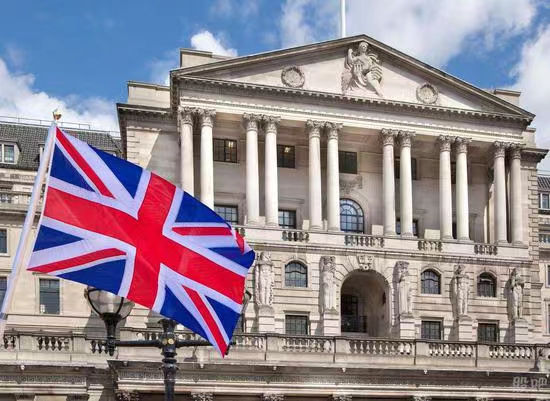
On August 1, 2024, the Bank of England announced an important change in monetary policy, cutting the base rate by 25 basis points to 5%. This move has attracted a lot of attention in the financial markets, but also triggered a lot of discussion in the economic field.
Behind the decision to cut interest rates reflects the current complex economic situation in the UK. In the context of slowing global economic growth, the British economy is also facing a series of challenges. Trade tensions, geopolitical uncertainty and weak global demand have all put some pressure on UK exports and economic growth. In addition, the weak growth of domestic consumption and the uncertainty of investment have also made the economic growth insufficient.
The cut in the benchmark interest rate is intended to stimulate economic activity. Lower interest rates can lower borrowing costs for businesses and individuals, which in turn encourages businesses to expand investment and production, boosting job growth. For consumers, lower interest rates could prompt them to spend more, especially on housing and consumer durables. This helps drive the demand side of the economy and promotes economic recovery and growth.
For businesses and investors, the Bank of England's decision to cut interest rates presents new opportunities and challenges. Enterprises need to seize this favorable opportunity, rationally plan funds, increase investment and innovation, and enhance their competitiveness. Investors need to adjust investment strategies according to changes in the market and balance risks and returns.
In the housing market, interest rate cuts may stimulate demand for home purchases. Lower mortgage rates will make buying a home more attractive, boosting activity in the housing market. This is not only beneficial to the real estate industry itself, but also to the development of related industries such as construction and decoration.
However, cutting interest rates is not without risks and challenges. On the one hand, a sustained low interest rate environment could lead to a rise in inflationary pressures. If the money supply increases too quickly and economic output fails to grow accordingly, it may trigger a general rise in prices, which will affect the cost of living of residents and the stability of the economy. On the other hand, a rate cut could have a detrimental effect on savers. Lower interest rates mean less return on savings, which can affect the financial situation of people who rely on savings interest for income.
For financial markets, the Bank of England's decision to cut interest rates also had a significant impact. The stock market usually reacts positively to news of rate cuts, as a lower interest rate environment is conducive to corporate earnings growth and valuations. The bond market will also be affected, with falling interest rates causing bond prices to rise. At the same time, the exchange rate market may fluctuate, and the pound may face certain depreciation pressure, which will have an impact on import and export trade and international capital flow.
The Bank of England's decision to cut interest rates was clearly considered and balanced. Although the rate cut does not mean the beginning of sustained easing, the move shows the central bank's concern about the current economic situation and its determination to respond. Problems such as rapidly rising wages and persistently high service sector inflation have made some boe members wary of cutting interest rates. However, after considering various factors, in order to promote stable economic growth and increase employment, the central bank chose to take this step.
In the period ahead, the Bank of England will closely monitor economic data and market reaction to assess the effect of its policy of cutting interest rates. If the economic situation does not improve significantly, we do not rule out the possibility of further easing policies. At the same time, the government also needs to coordinate fiscal policies with monetary policies to jointly promote economic recovery and development. For example, measures such as increasing infrastructure investment and improving the business environment will create more favorable conditions for economic growth.
In short, the Bank of England's decision to cut interest rates on August 1 is an important response to the current economic situation, and its effect and impact will gradually emerge in the future. All parties need to pay close attention to economic dynamics and respond flexibly to achieve their own development goals in the changing economic environment.

The United States announced on Monday its commitment to provide 1.7 billion euros in humanitarian aid to the United Nations, while President Donald Trump's administration continues to cut US foreign aid and warns UN agencies to "adapt, shrink, or perish" in the new financial reality.
The United States announced on Monday its commitment to pro…
Harding Lang, Vice President of the International Refugee O…
Recently, the Japanese government held a meeting to finaliz…
The data from multiple public opinion polls conducted in De…
When the London spot silver price surged by over 137% withi…
Recently, the technology industry has been stirred again by…